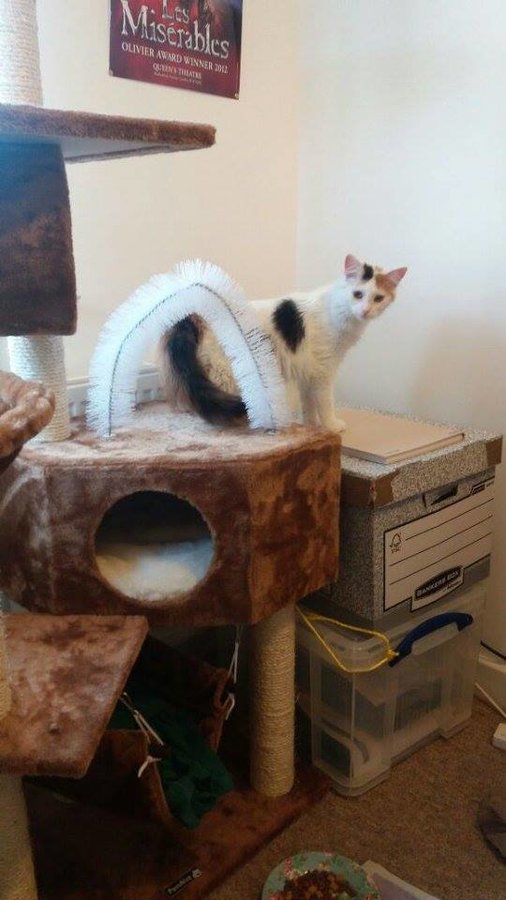Hi all,
My partner and I brought Lyra, a semi-feral cat with Feline Herpes Virus (FHV), home from a shelter last Wednesday. Since then we've been using the bonding room technique and kept her in a small study, spending time just being in the room with her.
Unfortunately, because of her FHV she has to have preventative eye ointment daily. Obviously, this is not her favourite activity. The shelter vets told us she would be OK without it for a few days while she settled, but that she would have to be back on the meds soon. By Friday, Lyra was eating, using the litter tray, and on both Saturday and Sunday she came out from her hiding place for (short) bursts of playtime/exploration while we were around.
We took this as a good sign and decided that after 3 days off medication it was time to go back on the meds! This turned out to mean a considerable amount of chasing her around the room, a lot of hissing and growling, and an involuntary defecation (from the cat). We eventually got her and applied the ointment. Since then she has retreated to her hiding place whenever we are around.
Has anyone got any tips on how to make the experience less stressful for her/calm her down afterwards. She needs the medication, or she might lose her eyes. But she hates being touched. Any ideas?
Thanks for reading this, and apologies if its in the wrong place (first time poster here!)
Simon
p.s. here are a few photos from pre-medication!
My partner and I brought Lyra, a semi-feral cat with Feline Herpes Virus (FHV), home from a shelter last Wednesday. Since then we've been using the bonding room technique and kept her in a small study, spending time just being in the room with her.
Unfortunately, because of her FHV she has to have preventative eye ointment daily. Obviously, this is not her favourite activity. The shelter vets told us she would be OK without it for a few days while she settled, but that she would have to be back on the meds soon. By Friday, Lyra was eating, using the litter tray, and on both Saturday and Sunday she came out from her hiding place for (short) bursts of playtime/exploration while we were around.
We took this as a good sign and decided that after 3 days off medication it was time to go back on the meds! This turned out to mean a considerable amount of chasing her around the room, a lot of hissing and growling, and an involuntary defecation (from the cat). We eventually got her and applied the ointment. Since then she has retreated to her hiding place whenever we are around.
Has anyone got any tips on how to make the experience less stressful for her/calm her down afterwards. She needs the medication, or she might lose her eyes. But she hates being touched. Any ideas?
Thanks for reading this, and apologies if its in the wrong place (first time poster here!)
Simon
p.s. here are a few photos from pre-medication!




